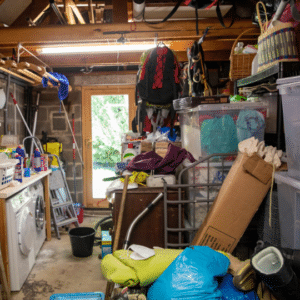November 3, 2023
Read Time: 5-6 minutes
Inspectors are the storytellers of homes. Hearing the whole story helps bring clarity. Imagine reading a book and getting to the end and one of the main characters is never story is never brought to a close. As a reader, you would be frustrated. You want to know, as Paul Harvey used to say, “The Rest of the Story.”
There is a similar feeling when Buyers are having their inspection. The house can be in fine condition. But, the inspector has to inform them that they couldn’t access a key component. It’s not unusual to watch the trust of a buyer begin to deteriorate at this point. It is quite possible that the Seller did not intend to make this area inaccessible. But, when a Buyer can’t have closure on a key character in the story of the house, they start to wonder, “What’s wrong with it?”
Sellers build trust by having the home ready for inspections. Here are five ways Sellers can be trust-builders and help the Buyers know the rest of the story.
 Electric Panel
Electric Panel
Two things usually interfere with inspections of electric panels. The two things are storage in front of panel and finished material around it (trim to help cover it up). If an inspector has to move personal items out of the way or remove finished material around the box there is the potential risk of causing damage to person property. Inspectors are not inclined to take that risk. As a result, they will indicate that the panel was not evaluated because of access. Make sure there is a clear path to the electric panel and an adequate working area in front of it.
Water Shutoff
Water Shutoffs are often in storage areas or behind finished material. Buyers want to know where the water shutoff is and if there are any signs of leaking around it. They also would like to know the about material of the line coming into the home is. When the access cannot be located or cannot be evaluated because of access it leaves room for concerns for the buyer. These concerns could easily have been reduced if the seller would have just provided access.
Attic Access
Some attics simply don’t have access. In an ideal world, Seller could provide access. However, that is not typically done just for the inspection. But, when there is an access area, Buyers want the inspector to be able to look into that attic and evaluate the elements of importance up there. Be sure storage is not obstructing the area where a ladder needs to be placed. Also, if the access has screws in it, it is best for the seller to remove those screws and provide access for the inspector so the inspector does not run the risk of either damaging the finish or noting in the report that the area was inaccessible. Again, giving access reduces the unknown. Thus, reducing the concerns.
Mechanical Areas
Mechanical rooms are commonly used as storage rooms. When Sellers have prepped their home for selling they often move a lot of items they normally have out into storage to help the home show better. Sometimes they inadvertently restrict access to the mechanicals. What are “mechanicals”? They are the furnace and water heater. Sellers should be certain to give the inspector access to these areas so they can stand in front of them, see the data plates, and adequately evaluate these components. When Sellers are purposeful in providing access it helps to build trust.
Crawlspaces
Some crawlspaces are just too small to access. But, there are times when they are not accessible because of stored items or finished materials. If your home has a crawlspace it is important to set the inspector up for success to help the Buyers build confidence that the Seller is not hiding anything. Have the area clear and make sure there’s no safety issues around or in the crawlspace (standing water, electric wires, animals/pests, etc.) If there are locks or fasteners that require special tools or power tools to remove the Seller should facilitate access in advance.
 Conclusion
Conclusion
Providing access to these areas builds trust. In turn, it helps the transaction move forward more efficiently. Remember, the Seller and the Buyer have the same goal…getting this house to change ownership. Let the story of the house be told in its entirety. That is an important part to facilitating this process. Providing access builds the Buyers peace of mind as the inspector is able to tell “the rest of the story.”
Other Articles You May Be Interested In
Ever wonder how long an inspection will take? Learn more here.

Pingback: 10 Tips for Sellers to Get Ready for a Home Inspection - Home Partners Inspections